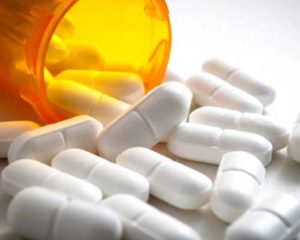Norco is the brand name for one of the combinations of acetaminophen, a nonsteroidal anti-inflammatory drug (NSAID), and hydrocodone, an opioid painkiller. While this combination is more infamous as Vicodin, there are several other brand names of this important prescription painkiller on the market. Norco was first approved for prescription use by the U.S. Food and Drug Administration in 1997.
Because Norco contains hydrocodone, an opioid analgesic, it is a Schedule II substance that requires visits to the doctor for refills. Hydrocodone is addictive, so your prescribing physician should discuss potential signs of addiction with you when you go to your regularly scheduled checkups. It is prescribed to treat moderate-to-severe pain, which is expected to get better, such as pain after dental surgery or a back injury.
Unfortunately, many people begin abusing Norco because they like the pain-relieving, euphoric relaxation that hydrocodone can produce. According to the U.S. Centers for Disease Control and Prevention (CDC), hydrocodone is among the most overly prescribed and widely abused narcotic medications in the United States, contributing to many people becoming addicted to prescription painkillers and potentially abusing heroin later. The CDC reports that 115 people in the U.S. die every day because of narcotic abuse.
Norco’s Role in the Opioid Epidemic
Hydrocodone and oxycodone were the types of opioid medications that pharmaceutical companies pushed and doctors began to overprescribe in the late 1990s. OxyContin and Vicodin are two of the most notorious, widely abused narcotic painkillers from this time, but Norco was approved right as the most recent opioid epidemic began.

By 2010, most states had cracked down on the overprescribing of opioid medications. Hydrocodone was moved from Schedule III to Schedule II so there would be tighter control over the substance, and doctors changed their prescribing practices to be more cautious with opioid drugs. However, most of the people who abuse heroin now began their struggle with narcotics addiction through prescription painkillers.
A 2008/2009 survey of young, urban injection drug users found that 86 percent of them abused prescription opioid painkillers for nonmedical reasons before they turned to heroin. They typically got these drugs from three sources:
- Family members with a prescription
- Friends who diverted the drugs
- A legitimate prescription of their own
Although illicit fentanyl and its analogues, like carfentanil, are driving the skyrocketing rate of opioid overdose and death in the U.S., the problem can be tied back to a steep rise in prescription painkiller availability in the late 1990s.
Widespread prescribing of opioids continues, meaning that more people have access to these drugs to potentially misuse, steal, or divert them. In 2017, according to the CDC, there were 191 million prescription opioid medications dispensed to patients. The U.S. Drug Enforcement Administration (DEA) reports that, in 2013, there were 136.7 million prescriptions for hydrocodone-containing medications, including Norco; this declined to 83.6 million in 2017.
Through the late 1990s and early 2000s, hydrocodone drugs were Schedule III drugs. This meant that they still carried a risk of abuse and addiction, but this was believed to be less of a concern than with Schedule II drugs like oxycodone. This allowed doctors to prescribe hydrocodone medications with several refills. There was no need to go back so that the physician could check on symptoms of dependence or addiction, levels of pain, and how the body was healing.
A United Nations report in 2010 found that there were 36.3 tons of hydrocodone produced and distributed in the world, and the U.S. consumed 99 percent of it. After hydrocodone drugs like Norco were found to be widely abused, the DEA changed the opioid’s scheduling to Schedule II on Oct. 6, 2014.
While Norco is not as infamous as some other brand names associated with the opioid addiction and overdose epidemic, it still contains an addictive substance that should be carefully monitored by a physician. Because this drug also contains acetaminophen, there can be complications not associated with other opioid medications. Acetaminophen is safe for over-the-counter use and not addictive, but in large doses, such as those associated with Norco addiction, there is a risk of overdose and liver damage.
Side Effects Associated with Norco
There are common side effects associated with Norco, whether you take this medication as prescribed or abuse the drug. They include:
- Drowsiness
- Dizziness
- Nausea and stomach pain
- Vomiting
- Constipation
If you take Norco to treat pain, your doctor can help you adjust the dose of these medications or prescribe other medications to ease some of these symptoms, especially constipation. However, if you abuse Norco without a doctor’s supervision, you are more likely to suffer side effects without relief.
Long-term Norco use can lead to physical dependence even if you take the drug as prescribed. If you no longer need Norco to treat pain, your doctor can work with you to taper off the medication until your body no longer depends on it. However, if you took Norco at higher doses than prescribed, took it more often than needed, or took it compulsively to get high or to feel normal, you may struggle with an addiction to the drug and will need additional help to overcome it.
Withdrawal Symptoms
Taking hydrocodone for a long time, as prescribed or because of an addiction, leads to physical dependence. Essentially, the brain has difficulty managing chemistry without the presence of opioids. When the drug is taken away, levels of dopamine and serotonin drop, which leads to withdrawal symptoms.
Opioid drugs also interact with other areas of the brain that control autonomic processes, like breathing and heart rate, and some opioids bind to a cluster of nerves in the stomach that is associated with digestion and intestinal movement. Because of this interaction, opioids can cause constipation, and quitting them can lead to stomach discomfort and diarrhea.
Withdrawal symptoms associated with opioids occur in two basic phases. Phase 1 withdrawal symptoms include:
- Agitation and anxiety
- Muscle aches
- Increased watering of the eyes
- Insomnia and other sleeping issues
- Runny nose
- Consistent sweating
- Excessive yawning
This phase begins about 12 hours after the last dose of Norco, and it will last for one to three days, with peak discomfort occurring after 48 hours to 72 hours. During the second or third day, Phase 2 will begin, which includes symptoms like:
- Abdominal cramping
- Diarrhea and other digestive issues
- Dilated pupils
- Goosebumps and chills
- Nausea and vomiting
For many people, opioid withdrawal feels like having the flu for a week to 10 days. For others, it is so severely uncomfortable that treatment is necessary to prevent pain and reduce the risk of relapse.
“It is important to find a medically supervised detox program that has you work with a physician to determine the severity of your withdrawal symptoms and that can offer medication-assisted treatment (MAT) as needed. If you try to quit Norco or other opioid drugs cold turkey, or without any supervision, the discomfort of withdrawal symptoms and cravings for the drug could lead to a relapse, which in turn could lead to an overdose. ”
Overdose on the Hydrocodone in Norco
Drug abuse puts you at risk of overdosing on the substance. Overdose symptoms for hydrocodone most often affect breathing rate, which can quickly lead to death.
Signs of a hydrocodone overdose, from Norco or other drugs, include:
- Reduced, uneven, shallow, or stopped breathing
- Excessive sleepiness
- Eyelids fluttering open and closed
- Muscle weakness
- Cold or clammy skin
- Bluish skin, especially around the fingertips, nose, and lips
- Alterations to pupil size
- Slow heartbeat
- Passing out
It is extremely important to call 911 if someone near you shows these symptoms. They need emergency medical attention.
Although hydrocodone overdose can be deadly, the other drug in Norco, acetaminophen, is also risky in large amounts.
It Is Possible to Overdose on Acetaminophen

Acetaminophen is an NSAID, and in directed doses, it is typically safe to take. It is most commonly found as the brand name Tylenol, but acetaminophen is put into many other medications as well because it is very effective at reducing inflammation and pain. It is found in many cold and flu medications over the counter to reduce fever and pain. It is also often combined with an opioid drug, like hydrocodone or oxycodone, because it can reduce pain through other channels in the brain.
There are three different types of Norco with different amounts of hydrocodone (5 mg (milligrams), 7.5 mg, and 10 mg), but each contains 325 mg of acetaminophen. This is the highest recommended dose for an adult to take at one time. Taking more than 4,000 mg (or 4 grams) of acetaminophen in one day can cause an acute overdose and serious damage to the liver. Taking more than two or three 325 mg doses of acetaminophen in a day for more than two or three months can also damage the liver through chronic harm.
Acetaminophen overdose symptoms include:
- Upset stomach
- Appetite loss
- Convulsions
- Diarrhea, or loose stools
- Irritability or anxiety
- Nausea or vomiting
- Excessive sweating
- Jaundice (yellowing of the skin and eyes).
Acetaminophen overdose also requires immediate medical attention, so call 911.
Get Help Ending Norco Addiction
Treatment for Norco addiction should follow evidence-based treatment practices laid out for opioid abuse. This starts with getting a diagnosis from a medical professional like a physician or addiction treatment specialist. You should then enter a detox program with medical oversight where professionals can monitor your withdrawal symptoms and prescribe MAT if you need help tapering off Norco.
Once you have completed detox, you can get a referral to an evidence-based rehabilitation program. Detox on its own is not enough to achieve recovery. It must be followed by comprehensive addiction treatment.

